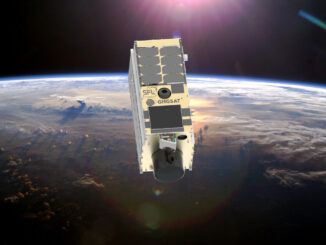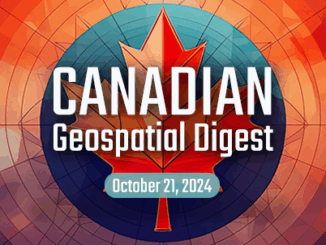
TORONTO, Ontario, Canada, 31 January 2024 – The NorSat-TD demonstration microsatellite developed by Space Flight Laboratory (SFL) for the Norwegian Space Agency (NOSA) has successfully transferred data to a ground station using optical communications technology. The accomplishment is a first for a Dutch-built laser communication device and among the first achieved by a microsatellite.
Optical, or laser, communications between a satellite and ground station enable faster and more secure transmission of larger data sets than typically possible with radio communications. Reliable delivery of data either collected or relayed by satellites is vital to most low Earth orbit applications, including Earth observation, telecommunications, atmospheric monitoring, maritime ship tracking, and space astronomy.
“The successful demonstration of satellite-to-ground communication by the 35-kg NorSat-TD microsatellite greatly expands the utility of affordable smaller satellites that are more cost effective than traditional spacecraft to develop, launch, and operate,” said SFL Director Dr. Robert E. Zee.
Two technologies are critical for optical satellite communications. The first is precise attitude control – a challenge for low-mass spacecraft – that allows the microsatellite to accurately and continuously point at the ground station for several minutes as the spacecraft passes overhead at 7.5 km per second. NorSat-TD incorporates barrier-breaking small satellite stability and pointing capabilities developed and refined by SFL in dozens of operational missions.
The second and equally important key to optical satellite-to-ground communication is a high-quality onboard laser terminal with a fine steering mirror that locks the extremely narrow optical beam onto a ground station beacon. The Small Communication Active Terminal (SmallCAT) laser communication system aboard NorSat-TD was developed by a consortium of organizations led by TNO (The Netherlands Organization for Applied Scientific Research) of the Netherlands.

Commenting on the success of the NorSat-TD optical communications demonstration, NOSA Senior Advisor, Tyler Jones, said, “The quality of the pointing performance of SFL’s DEFIANT bus speaks for itself. NOSA is also pleased with the flexibility and problem solving that SFL demonstrated while accommodating the SmallCAT terminal in the NorSat-TD design and working through payload evolutions with TNO.”
Launched in April 2023, NorSat-TD was the sixth mission developed by SFL for Norway. Designed primarily as a maritime ship tracking mission, the demonstration microsatellite also carried experimental payloads for enhanced GPS positioning, spacecraft tracking by laser, and iodine-fueled propulsion, in addition to the SmallCAT terminal. NorSat-4, now under development at SFL for a 2024 launch, will feature a first-of-its-kind low-light imaging sensor.
Established in 1998, SFL has developed 70 operationally successful smaller satellite missions totaling nearly 300 cumulative years in orbit. Another 26 missions are now under development by SFL, which offers a complete suite of nano-, micro- and small satellites – including high-performance, low-cost CubeSats – that satisfy the needs of a broad range of mission types from 3 to 500 kilograms. For a comprehensive list of SFL high-performance satellite platforms, please visit https://www.utias-sfl.net/satellite-platforms/overview/.
Visit SFL in Booth 23 at the 2024 Small Satellite Symposium being held February 6-8 in Mountain View, California.
About Space Flight Laboratory (SFL) (www.utias-sfl.net)
SFL generates bigger returns from smaller, lower cost satellites. Small satellites built by SFL consistently push the performance envelope and disrupt the traditional cost paradigm. Satellites are built with advanced power systems, stringent attitude control and high-volume data capacity that are striking relative to the budget. SFL arranges launches globally and maintains a mission control center accessing ground stations worldwide. The pioneering and barrier-breaking work of SFL is a key enabler to tomorrow’s cost-aggressive satellites and constellations. (www.utias-sfl.net)
Dr. Robert E. Zee
SFL Director
1-416-667-7400
[email protected]
Follow SFL on Twitter @SFL_SmallerSats




Be the first to comment